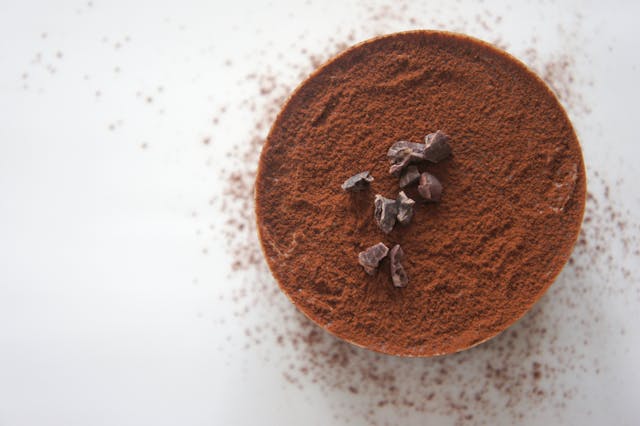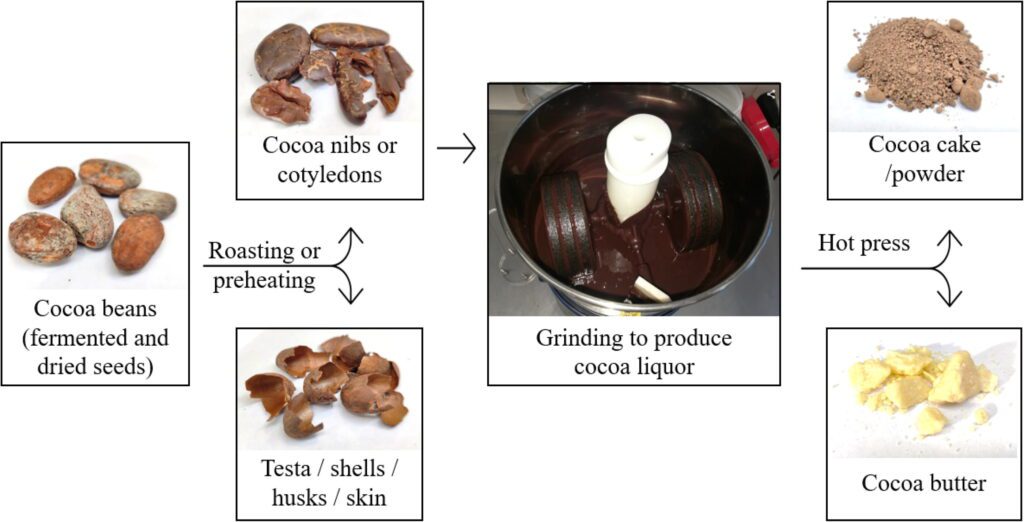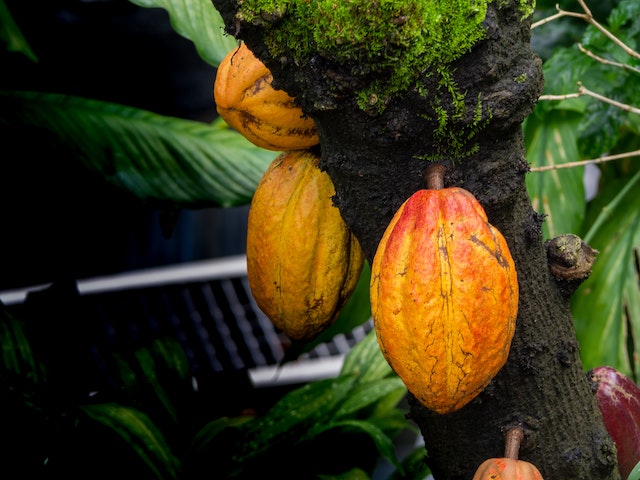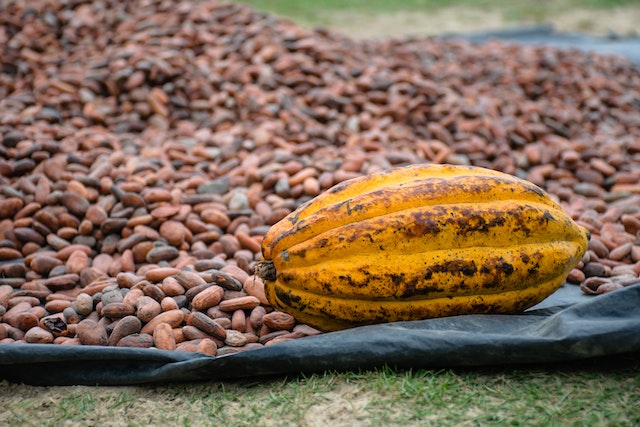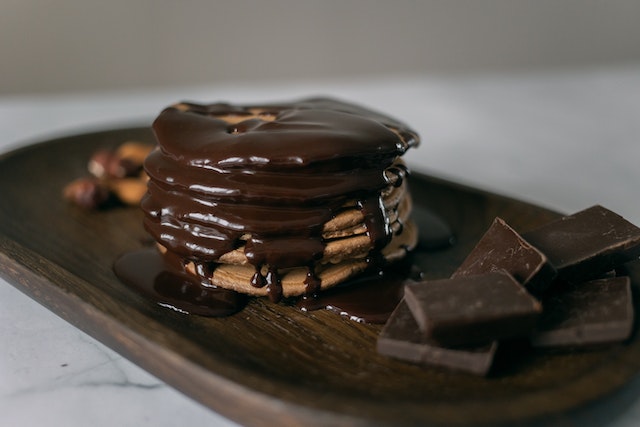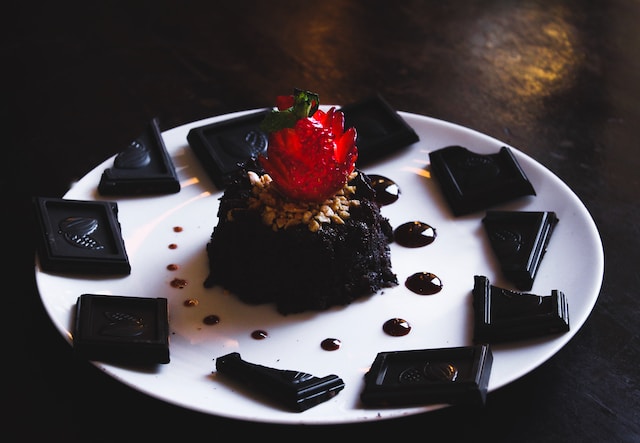
Dark Chocolate
July 21, 2024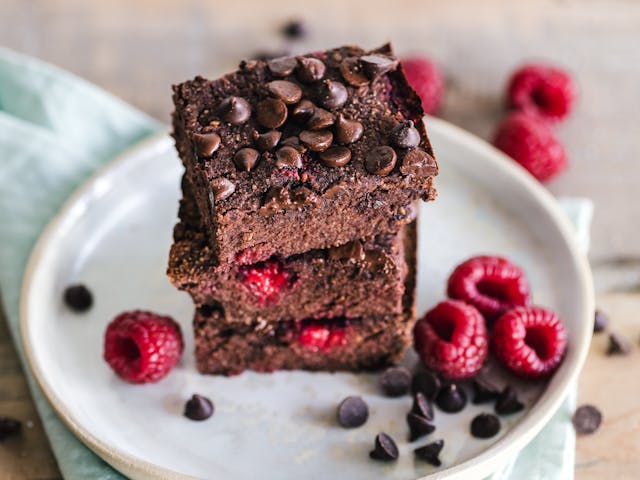
Your Ultimate Guide on Flavonoids from a Farm-to-Table Perspective
September 19, 2024Complete Guide on Cocoa Solids
From Bean to Bar in Craft Chocolate
‘Cocoa solids’ can mean different things to different people. Some may refer to all the components of the cocoa bean (cocoa powder and cocoa butter). Or they may mean only the non-fat cocoa solids, what remains of ground cocoa bean after cocoa butter is pressed out.
This guide focuses on both fat and non-fat cocoa solids. We’ll look at their importance in chocolate making and other recipes, as well as their chemical and nutritional content.
And to be sure we’re carrying you along, let’s define some key terms.
Image source: Tandfonline.com
The Cocoa bean is the seed that grows inside the fruit of the cocoa tree. Although called a bean, it is not really a bean. A cocoa fruit or pod can contain about 20-50 wet beans covered in a slimy white pulp. After harvesting, farmers ferment the wet beans and then dry them to get what is commercially called cocoa.
Cocoa nibs are cocoa beans, roasted or not, that have had their shell or skin removed. The shell of the cocoa bean is not edible.
Cocoa liquor is the brown pulp that comes from grinding roasted cocoa beans. It usually forms the base for making chocolate.
Cocoa butter is the fatty portion of cocoa liquor and makes up about 54% of cocoa liquor. Manufacturers sometimes press cocoa liquor to separate the butter from the dry solids.
Cocoa powder is the product from grinding the resulting cocoa cake after pressing out cocoa butter.
Now that you’ve learned the different ‘faces’ of cocoa solids, let’s see the journey it takes for a cocoa bean to become cocoa liquor or butter or powder.
The Journey from Cacao Bean to Cocoa Solids
The cocoa bean undergoes several important steps to become cocoa solids:
1. Harvesting and Fermenting Ripe Beans
The cacao tree grows its fruit directly on its trunk. This fruit, known as cacao (cocoa) pod, contains about 20-50 seeds. When the pods are ripe, farmers harvest and open them with machetes to remove the wet seeds. They then place the wet seeds in boxes or heaps and cover to ferment for 6-10 days.
Why ferment the beans?
Fermentation helps reduce the natural bitterness in the cocoa bean. It also begins developing the flavour and characteristics of the final cocoa product. Raw, unfermented cocoa beans are purple, but when fully fermented, they become brown.
On the chemical side, several changes take place during cocoa bean fermentation. Yeasts feast on the natural sugar in the white pulp around the raw cocoa bean, help break down a complex carbohydrate called pectin inside the bean, and produce chemical compounds that contribute to flavour development.
But yeasts are not the only microbes involved in cocoa bean fermentation. There’s also lactic acid bacteria (LAB)and acetic acid bacteria (AAB). Although some studies show their presence or absence does not affect the final quality of the bean or chocolate, lactic acid bacteria and acetic acid bacteria stop the raw bean from germinating, helping to shape the cocoa flavour we all enjoy.
Farmers and chocolate makers can control bean fermentation techniques to get desired quality and flavour profiles.
2. Drying the Fermented Cocoa Beans to Reduce Moisture
This can take 5-10 days. Farmers usually spread the fermented beans on trays or mats to dry under the open sun, but they can also use other methods such as solar and oven dryers.
The farmer’s aim in drying fermented cocoa beans is to reduce their moisture content from about 60% to 5-7%. Getting the perfect moisture does two important things: stop the beans from developing mould and from breaking during storage and transportation.
Something interesting: getting wet fermented beans to dry is not just a matter of seeing the moisture tank. Dry them too fast, and there’s a problem. Dry them too slowly, and you get into trouble too. Well fermented beans that are poorly dried can result in poor quality cocoa. Farmers must get the right temperature and right duration of drying to get quality beans for quality chocolate.
3. Roasting the Dried Beans to Enhance Flavour
Chocolate makers roast dried cocoa beans under very high temperatures, 100-150° Celsius (212-302 Fahrenheit). This dries off moisture and kills germs. Roasting is also important in further developing the chocolate characteristics of the cocoa.
Just as during drying, the temperature and length of roasting affects the quality of the cocoa. High temperatures and long roasting times reduce the carbohydrate and protein content while cocoa fat leaks out of the nib into the inedible skin. Not to even mention how high roasting temperatures can reduce the antioxidant flavonoids in cocoa!
RELATED: Complete Guide to Flavonoids – From Cacao to Your Plate
4. Deshelling and Grinding of Cocoa Nibs
After roasting cocoa beans, chocolate makers cracked them to remove the outer skin called shells. The broken beans, now called nibs, are then ground into a pulp called cocoa or chocolate liquor.
Since we’re talking about cocoa solids, the process from here differs from that of making chocolate from bean to bar.
5. Pressing Cocoa Liquor to Separate Fat from Non-Fat Cocoa Solids
Using a cocoa butter presser, chocolate makers separate cocoa liquor into cocoa butter and a non-fat cake. This cake is then ground into cocoa powder. It is this non-fat part of cocoa that many people refer to as cocoa solids, but in some contexts, cocoa solids can mean cocoa liquor (also known as cocoa mass).
What’s Inside Cocoa Solids?
Fats, proteins, carbohydrates, vitamins, and some really useful micronutrients called flavanols.
But before you go splurge on cocoa products, hear this: every cocoa solid is unique. Non-fat cocoa solids are nutritionally different from cocoa butter and cocoa liquor.
Products between brands also differ. This is because cocoa bean variety, farming methods, and post-harvest processing are some factors that affect the nutrient profile of different cocoa solids.
Let’s look at each type, its nutrition and chemical profile, flavour, and physical properties.
| Type of cocoa solid | Macronutrients | Minerals/vitamins | Other Substances |
| Cocoa liquor (Chocolate liquor, cocoa mass) | Carbohydrates (~17%)
Proteins (~11%) Fats (40-57%) |
Vitamins A, B (1,2,3,5,6) E and K
Magnesium, phosphorus, potassium, calcium, manganese, copper, iron, zinc, selenium |
Caffeine, theobromine, cholesterol.
N.B: may contain heavy metals Lead and Cadmium |
| Cocoa Butter | Fatty acids (60% saturated, 35% monounsaturated, 1% polyunsaturated) | ||
| Cocoa Powder (Non-Fat Cocoa Solids) | Carbohydrates
Proteins Fats (trace amounts) |
Magnesium, phosphorus, potassium, calcium, copper, iron, zinc, manganese
|
Caffeine, theobromine
N.B: may contain heavy metals Lead and Cadmium |
Cocoa liquor, the pulp from grinding cocoa nibs, has almost the same amount of cocoa butter and non-fat cocoa solids (cocoa butter may vary from 40-57%). Manufacturers can press cocoa liquor to separate cocoa butter from the dry solids. Or they may just cool the liquor to form blocks of raw chocolate. Raw chocolate is chocolate that does not yet have other ingredients added to it. At other times, extra cocoa butter can be added to cocoa liquor with other ingredients like sugar to make chocolate.
Cocoa powder has all the nutrients in cocoa liquor minus cocoa fat. When cocoa powder is treated with alkali to reduce bitterness, this also reduces the amounts of cocoa antioxidants.
Cocoa butter is made up of fatty acids, mainly palmitic, oleic, and stearic acids. It also has smaller amounts of the other substances found in cocoa liquor. An ivory-yellow fat, solid at room temperature, cocoa butter is what gives chocolate that satisfying snap when you break it and the smooth, creamy texture when it melts in your mouth.
Now that you know what cocoa solids bring to your chocolate experience, why not try some of our ethically sourced Bantu Chocolate bars? Taste the difference yourself!
Cocoa Solids Come in Various Flavours and Aromas
Cocoa solids possess diverse flavours because of several factors. Specie of cacao tree, age of the tree, soil composition, post-harvest treatment of mature beans, and roasting of dried beans.
Talking about cacao species, there are 3 common ones: Forastero, Trinitario, and Criollo.

Under the main species of cacao are various hybrids between species, all contributing to the complexity of cocoa and chocolate flavour.
Criollo is the highest quality, ‘fine flavour’, cocoa but has lower yields, representing only 3% of global cocoa as of 2017. Its flavours are described as ‘delicate’, with longer lasting fruity, nutty, and caramel notes.
Forastero is the cacao specie with the highest global production, about 80%, because it is more disease-resistant than Criollo. Also known as ‘bulk cocoa’, it is more bitter and acidic with stronger flavours than the other varieties.
Trinitario is a natural hybrid between Criollo and Forastero, imbibing the resilience of Forastero and the higher quality of Criollo.
It is true that the genetics of a cocoa bean is important to the final flavour of cocoa solids, but what happens to it during processing is even more important. Techniques in fermentation, drying, roasting, and conching all play significant roles in influencing the final aroma.
Cocoa Solids vs. Cocoa Mass
Dry cocoa solids are the non-fat part of the cocoa bean while cocoa mass, also known as cocoa liquor or chocolate liquid, is the pulp from grinding cocoa beans. Dry cocoa solids have cocoa butter pressed out while cocoa mass still has cocoa butter and is unsweetened. More cocoa butter and other ingredients can be added to cocoa mass to make chocolate, or the cocoa mass is cooled and moulded into raw chocolate blocks.
Cocoa Solids vs. Cocoa Butter
Dry cocoa solids are the defatted part of the cocoa bean after the butter has been pressed out of the cocoa liquor (ground cocoa bean). Meanwhile, cocoa butter is the fat of the cocoa bean and is responsible for chocolate’s smooth texture and many calories.
Key differences between non-fat cocoa solids and cocoa butter:
Colour: non-fat cocoa solids are brown while cocoa butter is pale yellow, solid at room temperature.
Nutrients and flavonoids: non-fat cocoa solids have mainly carbohydrates and proteins with more flavonoids. Cocoa butter is mainly fatty acids with fewer micronutrients. In terms of antioxidant health benefits, dry cocoa solids are healthier than cocoa butter because the non-fat portion contains most of cocoa’s antioxidants.
Uses: non-fat cocoa solids, together with cocoa butter, is used to make dark chocolate and milk chocolate. non-fat cocoa solids easily fit into recipes that call for chocolate or cocoa powder. Meanwhile, cocoa butter is the only cocoa product in white chocolate and is also used in the cosmetic industry.
Cocoa Solids vs. Cocoa Powder
Cocoa solids can be in the form of cocoa liquor, cocoa paste, raw chocolate blocks, or cocoa powder. Non-fat cocoa powder comes from powdering cocoa paste (also known as cocoa cake) after the cocoa fat has been pressed out.
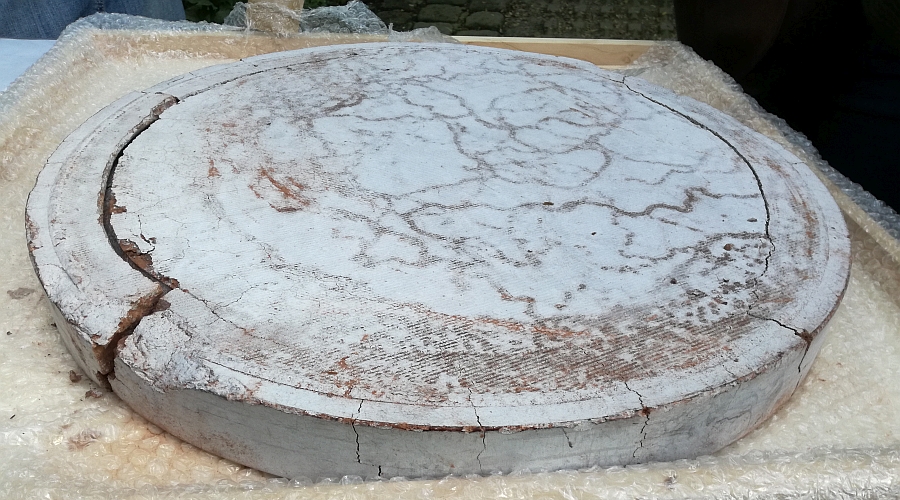
Cocoa cake after pressing out cocoa butter. Image by Chianti – Own work, CC BY-SA 3.0, Link
Cocoa Solids vs. Cocoa Nibs
Cocoa nibs are broken cocoa beans that have had their shells removed. They’re less processed than cocoa powder and therefore contain more nutrients.
Cocoa nibs tend to have a crunchy texture and intense flavour, and are used in various recipes like bread, cookies, ice cream, yoghurt, and even in chocolate.
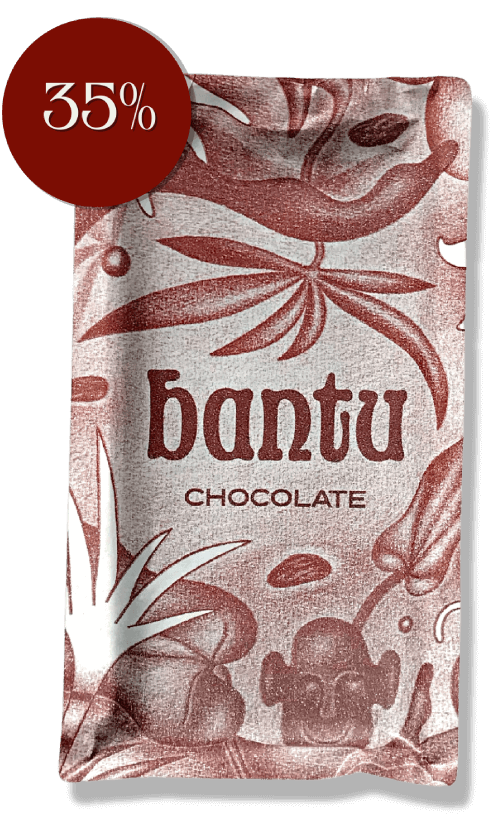
Toasted white chocolate with cocoa nibs! Nostradamus 35% is a mouthwatering blend of caramelly toasted white chocolate and the crunchiness of cocoa nibs.
Natural Cocoa Solids vs. Dutch Processed (Alkalized) Cocoa Solids
Dry cocoa solids are not created equal. Natural cocoa powder is produced through the broma process where cocoa butter is pressed out and the resultant cocoa cake is ground into cocoa powder. It is dark brown in colour and retains most of its micronutrients.
Alkalized cocoa powder undergoes the Dutch process to reduce bitterness. While alkalizing cocoa powder improves its flavour, it also reduces the amount of health-promoting antioxidants abundant in cocoa. Studies have found that the Dutch process reduces about 60% mean total flavonoid contents, with some studies showing as much as 98% flavanol loss for epicatechin and 80% for catechin.
The heavier the alkalization, the more the flavonoid loss.
Key differences between natural cocoa powder and alkalized cocoa powder include:
– Colour: Natural cocoa powder is brown while alkalized cocoa powder is dark brown
– Flavour: Natural cocoa powder is bitter and acidic with a strong chocolate flavour while Dutch processed cocoa powder is less intense.
– Flavonoids: Natural cocoa powder has more flavonoids than processed cocoa powder
– Uses: Natural cocoa powder is used in dark chocolate while alkalized cocoa powder is good for sweet recipes like ice cream and baking recipes.
Uses of Cocoa Solids
You can use dry cocoa solids in various recipes, from baking to DIY homemade chocolates.
Baking recipes with cocoa powder include brownies, cakes, tiramisu, babka, and roulade.
Savory dishes: may be challenging, but it’s possible to add cocoa into your savoury dishes. Or you could even rub cocoa solids on your barbecues to make candied meats!
Cocoa drinks: cocoa powder makes great hot cocoa or cold cocoa. Just scoop enough into your cup or mug of water, then add cream and sweetener (if you want). Cocoa powder also blends with shakes made of coconut, dates, bananas, peanut butter, hazelnuts, and the list goes on. Try different ingredients and see what you get.
Homemade chocolate: You can use cocoa solids at home to make solid chocolate bars, chocolate spread, or chocolate chips.
The Role of Cocoa Solids in Different Chocolate Types
Did you know there are about 7 types of chocolate? But some are not as popular as others.
The most popular chocolate types are dark chocolate, milk chocolate, and white chocolate. And each chocolate type has different amounts of cocoa solids, depending on the recipe, but also on regulation. The amount of cocoa content is always stated on the label for these 3 most common chocolate types.
For example, 83% dark chocolate means 83% of the ingredients come from cocoa (as non-fat cocoa solids and cocoa butter) while the remaining 17% come from added sugar and other ingredients. That is, in a 100g bar, 83g are cocoa and 17g is shared between added sugar and others.
For white chocolate, the percentage on the label is the amount of cocoa butter because white chocolate does not have non-fat cocoa solids.
Dark chocolate
Dark chocolate has more cocoa solids than any type of chocolate. It comes in different percentages from 35% to 100%. The percentage indicates the total amount of cocoa in the product.
It takes time for most people to enjoy dark chocolate, especially dark chocolate with at least 70% cocoa. Such consumers may enjoy dark chocolate that’s not as bitter.
Unsweetened dark chocolate, also known as 100% dark chocolate, has the highest amount of cocoa solids. In fact, it is made entirely of cocoa. But it’s too bitter and unpleasant to eat.
Milk chocolate
Milk chocolate has non-fat cocoa solids and cocoa butter. But the addition of milk means fewer cocoa solids. However, because it is less bitter, many people find milk chocolate more delicious than dark chocolate.
White chocolate
White chocolate does not have non-fat cocoa solids. It has only cocoa butter, sugar, and other ingredients as the manufacturer desires.
Raw chocolate
Raw chocolate is made entirely of non-fat cocoa solids and cocoa butter, is unsweetened, and yet to have other ingredients added to make chocolate ready for eating.
Cocoa Solids in Bean-to-Bar, Craft Chocolate
Craft chocolate is high quality chocolate, usually handmade in small batches by chocolate makers who value quality, flavour, and sustainable cocoa farming. That’s why craft chocolate uses the bean-to-bar chocolate making process.
Here’s the bean-to-bar chocolate process in 7 summarized steps:
1. Direct sourcing of sustainable cocoa beans
2. Sorting and roasting of beans in small batches
3. Cracking and winnowing out shells to get nibs
4. Grinding cocoa nibs with grinders that preserve more nutrients
5. Conching to enhance flavour
6. Hand tempering because of cocoa butter to improve texture
7. Moulding and packaging
At Bantu Chocolate, we farm our cacao and package our chocolate in biodegradable material. Other artisan chocolate makers work directly with ethical cocoa farmers or cooperatives to get sustainable cocoa beans.
Buy our Ethical Chocolate Bars
READ ALSO: How Artisan Chocolate is Made
Are Cocoa Solids Vegan-friendly?
Cocoa solids are naturally vegan-friendly because they do not contain milk and other animal products. For milk chocolate, vegans can get a wide range of plant-based alternatives made with coconut, oat, and almond milks.
Vegans concerned about unsustainable palm oil and bone char refined sugar can find palm oil free cocoa products sweetened with organic sugar.
ALL our cocoa products are vegan friendly, from dark chocolates, milk and white chocolates, chocolate spread, to cacao pulp juice kombucha. We use coconut milk for our milk chocolate bar and organic cane sugar for all our chocolates.
View all our vegan friendly cocoa products
Health Benefits of Cocoa Solids
The health benefits of dry cocoa solids are much like those of dark chocolate. It is important to note, however, that processing reduces the amounts of antioxidants responsible for cocoa’s health benefits. To get the most out of cocoa solids, buy dark chocolate or natural cocoa powder.
Some health benefits of cocoa solids include:
– Antioxidants help fight oxidative stress and protect your body against chronic diseases.
– Potential benefit for the cardiovascular system by improving blood flow and lowering blood pressure.
– May boost mood through psychoactive substances such as caffeine and phenylethylamine.
– Cocoa solids also benefit the skin by protecting it against UV rays. In addition, consistent cocoa consumption helps increases skin thickness and hydration.
Sustainability in Cocoa Solids Production
Cocoa farming is plagued by chronic sustainability issues. Poor farmer incomes, child labour, deforestation, and waste management.
Labels such as Fair Trade and other sourcing methods like direct trade enable chocolate makers to buy cocoa beans at higher prices from farmers who use sustainable farming practices. But these sourcing channels are not always enough to tackle the chronic challenges.
Being cacao farmers, our mission at Bantu Chocolate has been to create a sustainable chocolate supply chain that benefits everyone: the environment, the farm worker, and the ethical consumer.
Here’s how we do it:
– We implement agroforestry on our cocoa farm to preserve biodiversity and soil health.
– We pay our farm workers 3X more than the fair trade price and 6X more than the commodity price.
– Our chocolate bars are packaged in biodegradable materials and our dairy-free chocolate spread comes in reusable glass bottles.
– All our products are organic-certified.
Join us make cocoa sustainable
Answers to Some Frequently Asked Questions About Cocoa Solids
Is cocoa solids real chocolate?
Cocoa solids are the basic ingredients in real chocolate. Fake chocolate may also have cocoa solids but in way insignificant amounts. Real chocolate contains both non-fat cocoa solids and cocoa fat (cocoa butter) in sufficient quantities.
Are cocoa solids natural or artificial?
Cocoa solids are natural products from the cacao seed. Commercial cocoa solids are available as natural products or alkalized products treated with alkali to reduce bitterness. Alkalized cocoa is darker than natural cocoa.
How do you know which cocoa powder is best?
For health benefits, natural cocoa powder is better than Dutch-processed cocoa because Dutching reduces the quantity of antioxidants in cocoa. Dutched cocoa is dark brown and is usually labelled as ‘treated with alkali’ or alkalized’ while natural cocoa may be labelled as ‘natural’ or ‘raw’ or ‘organic.’
For baking purposes, which powder is better depends on recipe and other ingredients. Dutched cocoa has been washed with alkali and is therefore non-acidic. This means it will not react with baking soda which is a base. You would want your cocoa powder to react with baking soda to cause your mixture to rise. So for recipes needing baking soda or baking powder, choose natural cocoa powder.
For other recipes where you just need cocoa powder for chocolate flavour, the better choice between natural cocoa powder and dutched cocoa is a matter of personal preference.
What is the minimum quantity of cocoa solids for dark chocolate?
Dark chocolate must have a minimum of 35% total cocoa of which at least 14% should be non-fat cocoa solids and at least 18% cocoa butter.
Key Takeaways
The phrase ‘cocoa solids’ can mean different things to different people. It could mean cocoa powder, cocoa liquor, or even cocoa butter.
Cocoa solids are the basic ingredient for chocolates with percentages the differ according to chocolate type and manufacturer’s formula. Dark chocolate has more cocoa solids and therefore more antioxidants than milk chocolate and white chocolate. Meanwhile, natural cocoa powder has more flavonoids than Dutch-processed cocoa powder. Also, cocoa powder is the better choice for recipes that call for baking soda.
View all our sustainable cocoa products today.
References
https://bnrc.springeropen.com/articles/10.1186/s42269-021-00634-7
https://onlinelibrary.wiley.com/doi/full/10.1155/2020/8830127
https://www.tandfonline.com/doi/full/10.1080/10408398.2022.2141191
https://www.sciencedirect.com/science/article/abs/pii/S0963996916300163
https://www.sciencedirect.com/science/article/abs/pii/S0026265X17302692
https://pubs.acs.org/doi/abs/10.1021/jf801670p
https://www.sciencedirect.com/science/article/abs/pii/S1383586606004096
https://sallysbakingaddiction.com/baking-basics-dutch-process-natural-cocoa-powder/
Chocolate Extinction: Fact vs. Fiction + What Chocolate Lovers Can Do
Chocolate ExtinctionFact vs. Fiction, What Consumers Can Do Share On Facebook Twitter Email Is the world really running out of chocolate? Not really. Currently the global […]
Corporate Chocolate Gifting Ideas to Appreciate Employees and Delight Clients
Corporate Chocolate GiftingHow to Appreciate Employees & Delight Clients Share On Facebook Twitter Email When it comes to corporate gifting, a one-gift-fits-all approach just doesn't cut […]
Cacao Supper Club at Home: Guide to Tasting Chocolate, Cacao Tea, and Pulp Juice
Cacao Supper Club at HomeGuide to Tasting Chocolate, Cacao Tea, and Pulp Juice Share On Facebook Twitter Email Imagine gathering around the table with a few […]
